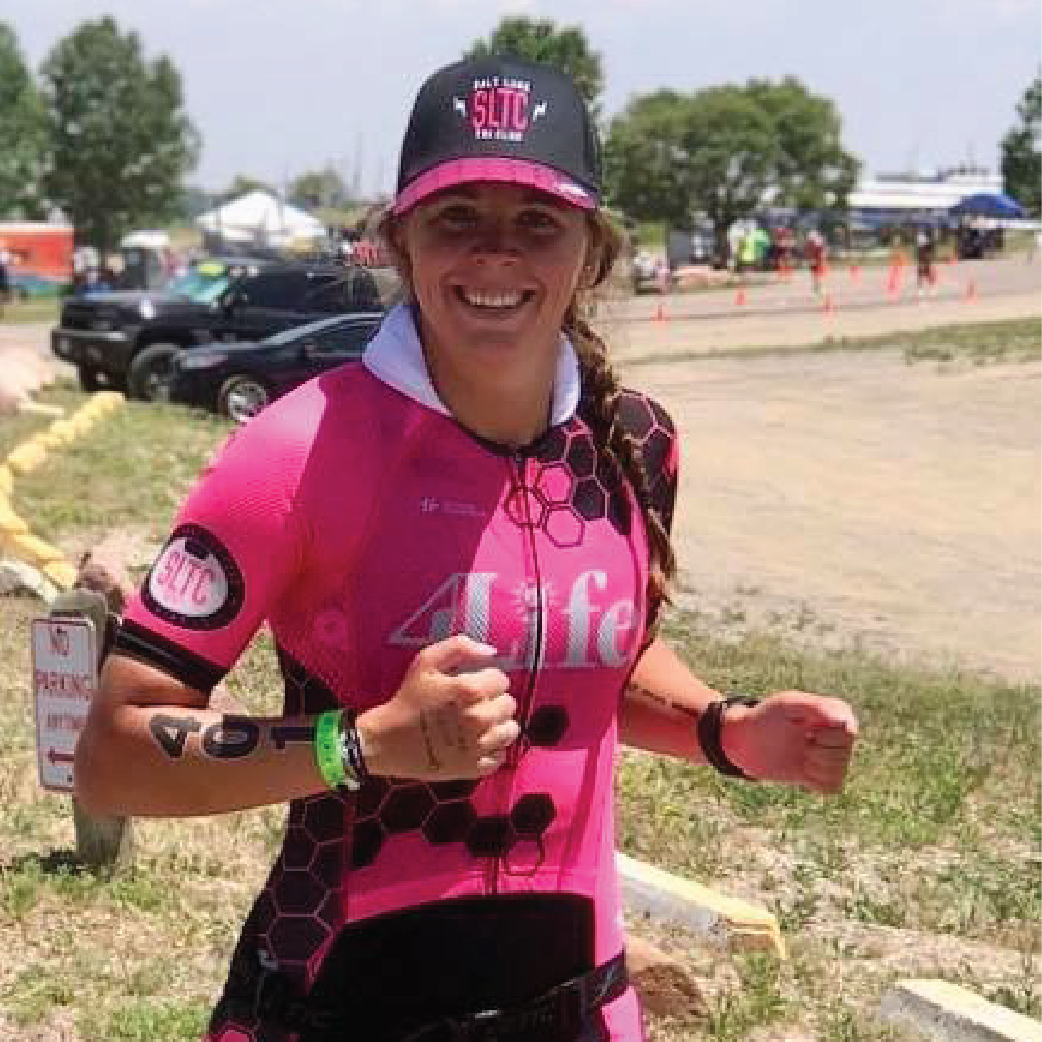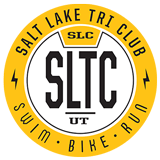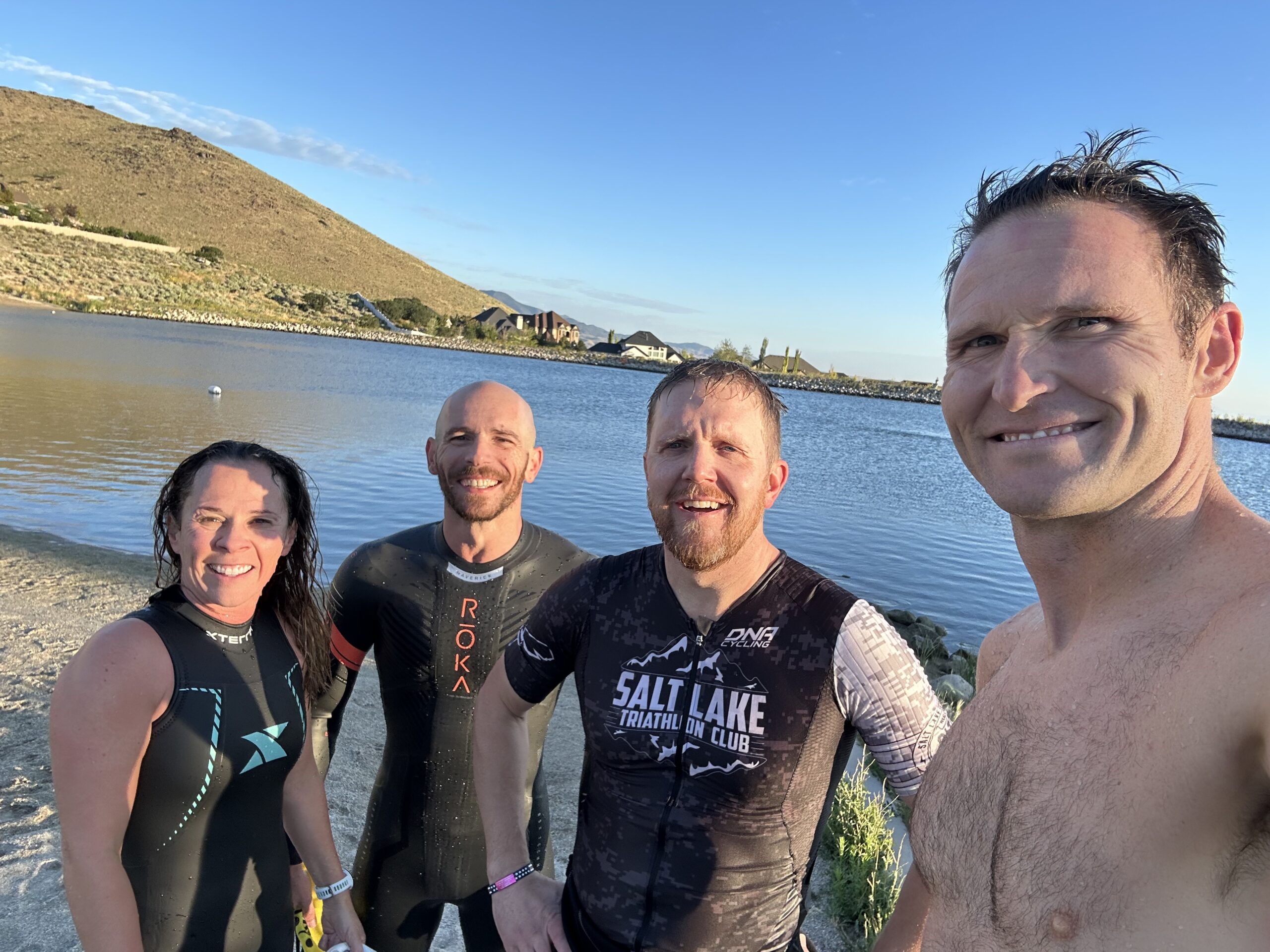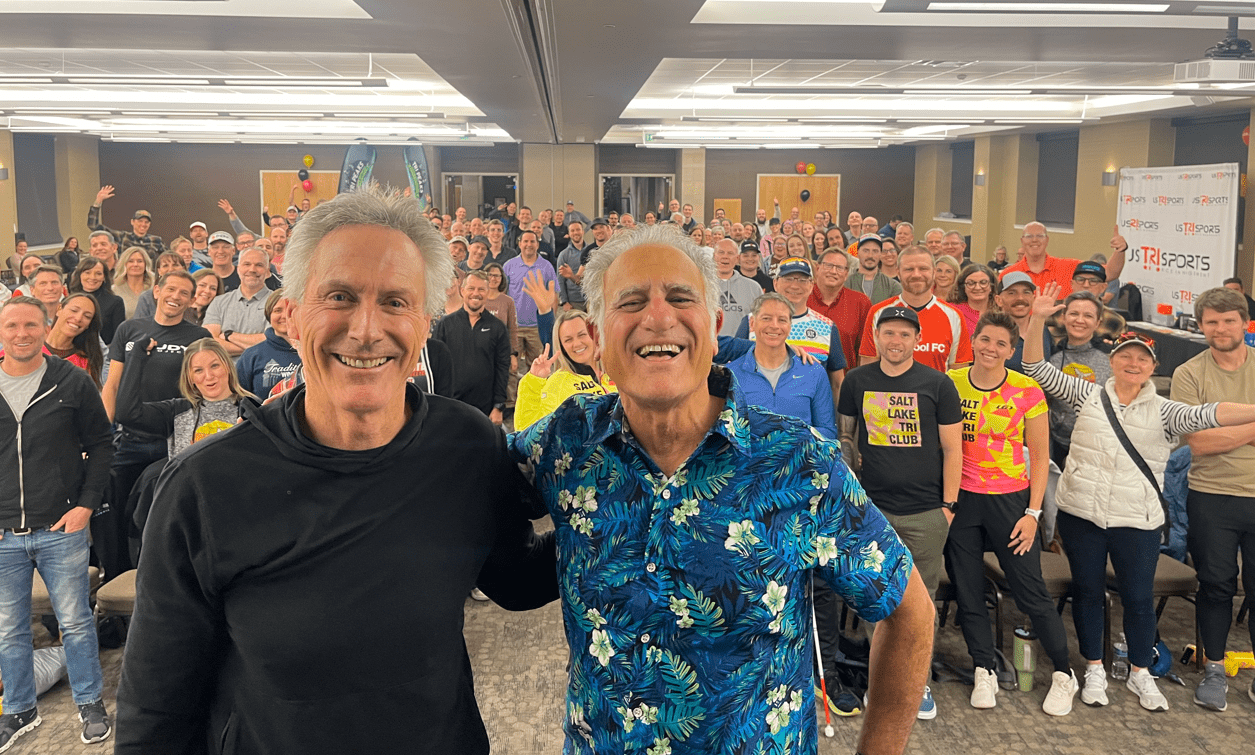The Ultimate Guide to Training for Your First Triathlon
Everything you need to know to begin your triathlon journey – from distances, race selection, training, gear, nutrition, and more.
Starting triathlon training can be daunting, but it’s not impossible. With three sports to train for (swimming, cycling, and running), it involves choosing a race, determining your workouts, getting the right gear, and adjusting your diet. But, as many successful triathletes have shown, training for a triathlon can be an enjoyable experience. This beginner’s guide to triathlon training and racing covers all the essentials – from gear and nutrition, to mental preparation and hiring a coach.
Triathlon is for everyone, regardless of shape, size, age, and ability. Anyone can do a triathlon, from kids to seniors, and from 5K runners to those looking for weight loss or improved health. If you’re wondering if you belong in triathlon, the answer is yes!
What is a triathlon?
A triathlon is a multisport event that combines swimming, cycling, and running in a single race. It is one of the world’s fastest-growing sports, as it promotes fitness, strength, and endurance. The course and rules of each triathlon vary, depending on the event.
The World Triathlon is the official organization of the sport. They are responsible for setting the rules and regulations, as well as running events and providing education and resources. They also compile the official results of triathlons around the world.
Triathlon distances vary, from the shortest super sprint (usually a 500-meter swim, 6-mile bike, and 1-mile run), to the longest ultra triathlon or Ironmans (over a 2.4-mile swim, 112-mile bike, and 26.2-mile run). The majority of races follow the standard distance format, with 4 distances: sprint, Olympic, half-Iron/70.3, and Ironman/Iron-distance.

What are the three legs of a triathlon?
A triathlon is a multisport race that requires competitors to complete three consecutive legs – swimming, cycling, and running. These three legs vary in distance depending on the event, but typically start with swimming, then biking and finally running. Swimming is the first leg of the event, and is usually done in a pool or lake. The cycling leg follows, and is performed on the road or off-road, depending on the event. The running leg is the final section of the triathlon, and takes place on the road, track, or trail.
Triathlon events can range from short-distance sprint races to long-distance endurance events, with an ever-growing range of competition formats and rule sets. The world’s fastest triathletes race in the World Triathlon Series, and there are also many other events around the world offering varying distances and disciplines. Education around triathlon events, rules and courses is also widely available.
How long is a triathlon race?
A triathlon is an endurance event that combines three different sports in one race. The traditional triathlon is made up of a swim, bike, and run, each of which is completed in succession with no break in between. The standard Olympic distance triathlon consists of a 1500m swim, a 40km bike ride, and a 10km run. However, triathlons can vary in distance and rules depending on the event. From short sprint events to long-distance challenges, there are triathlons for racers of all levels and abilities. Some of the most popular triathlons include the World Triathlon Series, Ironman, Xterra, and International Triathlon Union events. To find out the exact rules and distances of a specific triathlon, be sure to check out the event’s website for more information.
TRIATHLON DISTANCE SWIM BIKE RUN
Sprint .75K / 750m 20K / 12.4mi 5K / 3.1mi
Olympic 1.5K / .9mi 40K / 24.8mi 10K / 6.2mi
Half-Iron/70.3 1.9K / 1.2mi 90K / 56mi 21.1K / 13mi
Ironman/Iron-distance 3.8K / 2.4mi 180K / 112mi 42.2K / 26.2mi
Choosing Your First Triathlon Race
Triathletes can choose their first race either by first learning the fundamentals of swim, bike, and run and then selecting a race, or by selecting the race and then training. Both approaches are acceptable. If you are ready to choose a race, there are many options available.
We recommend starting with a super-sprint or sprint triathlon, which is the shortest distance. Even if you are skilled in one sport, you need to learn the details of the other two and how to combine them into one race. The short distances of a super-sprint or sprint triathlon allow you to master the basics without consuming too much time, energy, or money. As you gain confidence, you can consider moving to longer distances. Pick a race that excites and motivates you. This can be a local triathlon with family support, a race with coworkers, a women’s-only or disability-friendly race, or an iconic destination race such as the Ironman Hawaii 70.3 Triathlon, Malibu Triathlon, or Our local favorite Daybreak Triathlon. You can find a triathlon near you using the TriFind search engine or your local club.
Can I do a 70.3 or Ironman as my First Triathlon?
While some people may be inspired to start with a half-Iron (70.3) or full Ironman, it’s not recommended. Longer races require more training: a sprint triathlon can be completed with just 2 months of 4-5 hours/week training, while Ironman training can take several months and exceed 20 hours/week. Sprint distance triathlons provide an opportunity to learn the race day details, from transitions to nutrition and fatigue management, and to connect with other triathletes. These experiences will improve your overall triathlon skills.
Start small, include shorter races in your preparation, and have your long-term goal of a 70.3 or full Ironman if desired.

Is it possible to do a sprint triathlon without training?
Yes, it is. However, the more important question is whether it’s advisable to do so. Many who have attempted it without training have found it to be a painful and unnecessarily difficult experience. Sprint triathlons may be short, but they still require physical effort, and without proper preparation, you might struggle. This could result in a negative experience that discourages you from ever trying triathlons again. There are also safety concerns to consider. Open water swimming in a triathlon is different from recreational swimming in a pool. In open water, there are no lane lines to guide you, it can be dark, and you may not be able to touch the bottom. Additionally, you may come into contact with other triathletes. The same goes for cycling and running in a triathlon versus riding and running alone. Through training, you’ll learn how to handle these challenges before the race, ensuring a more enjoyable experience.
How much time does it take to train for a sprint triathlon?
With just 4-5 hours of training per week, you can get ready for your first triathlon in just 8 weeks! Following a training plan, for beginners, can help you stay organized and eliminate confusion about what workout to do each day. These plans usually have one workout per day, like a swim, bike, or run. Occasionally, you may do a “brick” workout, which combines a bike ride with a short run. Although it may seem like you should train all three disciplines every day, most training plans are designed to help you achieve a fitness level that allows you to seamlessly complete all three on race day.
Do you need a coach for a triathlon?
Having a coach can be beneficial for new triathletes, but it’s not a requirement. Some new triathletes start with a free training plan and then seek additional support after their first race. Free resources for triathlon training are readily available online, as well as books from the library, local triathlon clubs like the Salt Lake Tri Club, and online seminars.
If you want more support than just a training plan, consider hiring a triathlon coach. When searching for a coach, keep your specific goals in mind, such as accommodating an unpredictable schedule, nutritional advice, or one-on-one swim instruction. Start your search for a USA Triathlon Certified Coach using the search engine provided by USA Triathlon.
Triathlon and Swimming: Can You Participate Even If You’re Not a Good Swimmer?
If you’re new to swimming, you can still participate in a triathlon by taking adult swim lessons. Organizations like the American Red Cross or Total Immersion offer hands-on, individualized instruction in a controlled pool environment or your local county rec center. Learn the proper technique and build your confidence before starting your triathlon training plan. Remember that good technique is crucial for reducing injury and improving efficiency and avoiding injury. So, don’t let your lack of swimming skills hold you back from participating in a triathlon. Start learning and training today!
What items do you need for a triathlon?
The most important item you’ll need is a good quality wetsuit. Wetsuits help you stay warm in the water and reduce drag as you swim. Make sure you get a wetsuit that fits properly and matches your swim stroke. For the cycling segment of the event, you’ll need a bike and helmet. Try to get a light, comfortable bike, as this will make a big difference to your speed and overall performance. Don’t forget to bring a helmet, water bottles, and a repair kit with a few items you may need during the race. You’ll need the right footwear for running, too. Try to get a pair of running shoes that offer cushioning, support and stability. They should also be lightweight and breathable.  Finally, if your triathlon is part of a larger event such as the World Triathlon Series, you’ll need to know the rules and regulations. Make sure you understand the rules and regulations of the race, as well as the course.
Finally, if your triathlon is part of a larger event such as the World Triathlon Series, you’ll need to know the rules and regulations. Make sure you understand the rules and regulations of the race, as well as the course.
Fueling is an important aspect of training for a triathlon.
Your diet should include a balanced amount of protein, carbs, and healthy fat. Fuel throughout the day with lean proteins, good fats, fruits, veggies, and complex carbs. Stay hydrated by drinking water and electrolyte beverages. Most sprint triathlon workouts are under an hour, so no special fueling is required.
Don’t hesitate, you can complete the triathlon! The Salt Lake Tri Club is here to support you every step of the way. Take advantage of our free resource on our blog or private Facebook members page and keep us updated on your progress by tagging us in your swim-bike-run adventures on Instagram, and Facebook. We look forward to seeing your triumphant finish-line photo. Good luck!




